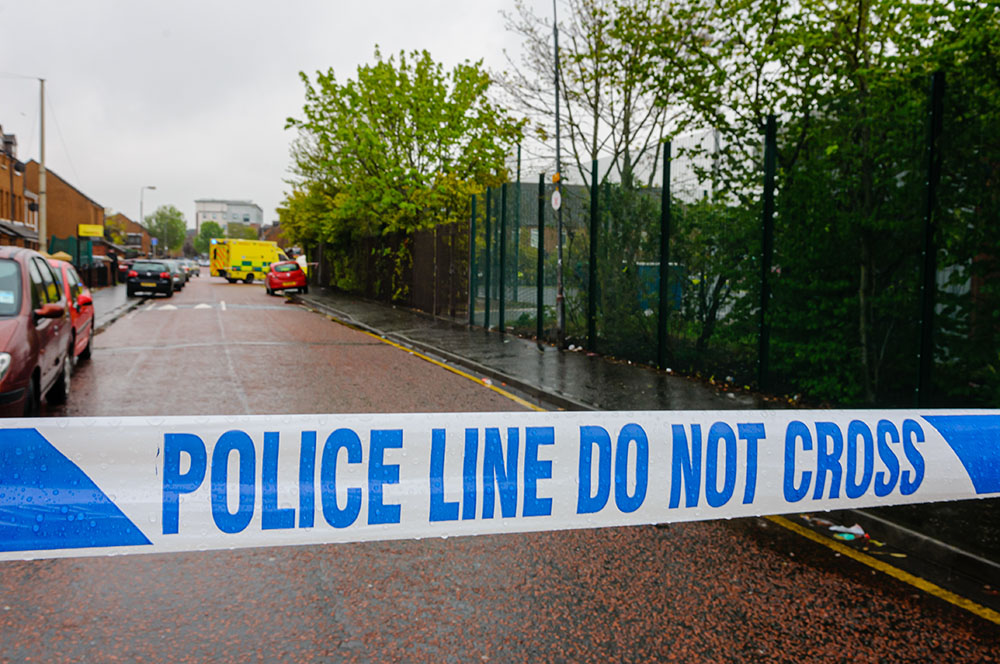How Does Trauma Cleaning Work In Different Settings?

CONTENTS
- Trauma cleaning fundamentals
- Residential trauma cleaning challenges
- Commercial trauma cleaning protocols
- Public space trauma cleaning operations
- Advanced cleaning techniques and technologies
- Handling hazardous materials and contaminants
- Frequently asked questions
- Get in touch
Trauma cleaning represents a distinct departure from standard cleaning procedures, involving remediating environments affected by traumatic events. The process of trauma cleaning changes across settings like private residences, commercial facilities and public spaces.
At ICE Cleaning, we offer trauma cleaning services for various areas, including public spaces, commercial buildings, and private homes. We are skilled in cleaning and decontaminating an area affected, working closely with you and your local council.
Read on to learn the techniques employed by trauma cleaners with modern technology, restoring safety to environments affected by trauma.
Trauma cleaning fundamentals
Understanding the fundamentals of trauma cleaning is essential for anyone managing residential, commercial, or public spaces. This complex and sensitive task involves numerous considerations ranging from safety protocols to psychological factors.
Safety protocols and equipment
The first principle of trauma cleaning is ensuring the safety of all parties involved. Professional cleaners follow Health and Safety Executive (HSE) guidelines regarding potential exposure to bloodborne pathogens and other biohazardous substances found at trauma scenes.
Using personal protective equipment (PPE), including gloves, masks, and full-body suits is standard practice. A variety of specialised tools form part of a professional cleaner's use, including:
- Industrial-grade disinfectants
- Odour neutralisers
- Steamers
- Ozone machines
- Biohazard disposal containers
Cross-setting application
The principles outlined above apply universally across different settings; whether it is a home with an unattended death, an office space, or a public area exposed to biohazardous materials.
While the specific challenges change depending on the environment, these fundamentals remain consistent in ensuring effective and compassionate trauma cleaning services.
Residential trauma cleaning challenges
Residential trauma cleaning presents unique obstacles - technical, emotional, and psychological, due to the personal nature of these environments.
The first significant challenge in residential trauma cleaning is dealing with affected families and individuals. Unlike commercial or public spaces, homes often carry a sentimental value for residents.
Therefore, it requires an empathetic approach when interacting with those grieving or distressed. This includes maintaining confidentiality about the incident and assuring their home is restored to its previous condition.
Each residential space is different in its layout, materials used and furnishings present. This makes each trauma clean-up scenario unique. Whether it is a bloodborne pathogen spillage, crime scene aftermath or unattended death; professionals must adapt quickly.
Commercial trauma cleaning protocols
Cleaning up after a traumatic event in a business area involves handling dangerous substances and following strict rules. The main goal is to make the area safe again while being careful and respectful of any public attention.
Commercial spaces like offices, restaurants, or retail stores often have large areas compared to residential properties. They may have multiple floors or rooms, each presenting unique challenges for emergency response and clean-up operations.
Therefore, trauma cleaners must employ specialised strategies tailored specifically for these diverse environments. Commercial trauma cleaning must follow health and safety rules from authorities like the UK's Health & Safety Executive (HSE).
The guidelines explain how to handle and dispose of bio-hazardous waste correctly. They ensure that tests after cleaning show a safe environment without harmful germs.
Managing public perception also becomes an additional challenge during trauma clean-up processes. Professional services work under strict confidentiality agreements – preventing potential reputational damage caused by disruptions.
Experts use special tools to deal with problems caused by big traumatic events in commercial buildings. These tools include ozone generators and antimicrobial fogging machines.
These methods combine with traditional cleaning procedures and ensure the thorough decontamination of affected areas.
Public space trauma cleaning operations
Trauma cleaning in public spaces presents a unique challenge that require specialist knowledge and expertise. Public areas such as streets, parks, or other open spaces are often highly trafficked locations where incidents can occur.
The complexity of trauma cleaning in these settings is due to several factors. Bystanders can make things harder and less safe for everyone involved.
Additionally, environmental elements like weather conditions can further exacerbate these difficulties. A good plan for handling incidents in open areas starts with quick response times to reduce exposure and minimise disruption.
You need equipment to handle different biohazardous materials found at trauma scenes effectively, like:
- Rapid response: The quicker a professional team arrives on site after an incident, the more efficient they will be at containing potential hazards and reducing risk exposure.
- Safety measures: Ensuring all necessary safety protocols are adhered to is paramount when performing trauma clean-up operations in public places.
- Biohazard management: Dealing effectively with biohazards involves correctly identifying them before implementing suitable disposal methods which comply with local regulations and guidelines.
Advanced cleaning techniques and technologies
Professionals utilise sophisticated methods and state-of-the-art equipment to manage biological hazards effectively. This ensures that environments are restored to safe conditions, protecting public health and property value.
The tools used by skilled cleaners includes disinfectants, dehumidifiers, fogging machines, waste-disposal gear and ozone generators to extract unpleasant odours and contaminations.
These equipment ensure thorough sanitisation processes capable of eliminating all traces of biohazardous materials.
Advanced methodologies like antimicrobial treatments are utilised in these settings. Professionals employ ATP (adenosine triphosphate) testing technology to verify cleanliness on a molecular level – ensuring no potential pathogens remain after cleaning.
Handling hazardous materials and contaminants
A critical aspect of trauma cleaning that requires careful attention is handling hazardous materials and contaminants. These can include biohazards, chemical spills, or other harmful substances.
Biohazardous waste poses significant health risks due to its potential to spread infectious diseases. Cleaners utilise personal protective equipment (PPE), including gloves, gowns, masks, eye protection and respirators.
The disposal process includes using approved biohazard bags or containers followed by incineration or autoclaving.
Apart from biohazards and chemicals, trauma scenes may contain other contaminants like drug residues or mould spores, requiring specific cleaning protocols.
Using professional-grade equipment, such as HEPA-filtered vacuum cleaners for airborne contaminants or steam sterilisers for surfaces, ensures a thorough decontamination process.
The intricacies involved in handling hazardous materials and contaminants necessitate expert knowledge and precision. Trauma cleaning must be conducted by experienced professionals who can guarantee safe and effective results.
Frequently asked questions
Do emergency services clean up crime scenes?
Emergency services do not conduct cleaning as they are not qualified - therefore trauma cleaners are outsourced for cleaning biohazards.
What is the process of trauma cleaning?
Trauma cleaners clean and sanitise scenes, remove biohazardous materials safely, and restore the area discreetly.
Who cleans up after traumatic events?
Specialised teams are trained to handle hazardous materials while showing sensitivity to those affected.
Do trauma cleaners clean vehicles?
Trauma cleaners may need to clean and disinfect a vehicle if there has been a fatal accident with biohazards present.
Get in touch
Our trauma clean-up services at ICE Cleaning are thorough and discreet, ensuring your comfort and safety at all times. We can effectively clean and decontaminate any area affected by a tragedy, disposing biohazards off-site safely to make your property safe again.
To learn more about our trauma cleaning services, get in touch with our team today at 0208 066 0360 or enquiries@icecleaning.co.uk. If you require emergency cleaning today, call us now and we can be on-site within a matter of hours, no matter where you are in the UK, 24/7.

Speak with me today,
I’m here to help
By asking you a few questions either via phone or email I can immediately provide a realistic estimation of the cost.
You’re in good company. We’ve cleaned for the following commercial clients… View all

Why choose us?
- Cater to a wide variety of cleaning situations
- Nationwide coverage, available 24/7
- Cater to commercial and domestic clients
- Free survey provided prior to quotation
- Emergency response team
- Offer a bespoke service designed to suit all your needs
- All technicians hold professional health and safety qualifications, including BICSc, IOSH, Dewpoint Professional & Safe Contractor
We’re fully accredited
We place best practise, professional expertise and health and safety at the core of our business. We’re fully compliant with all legal obligations. You can view a list of our accreditations below, or visit our Health & Safety page for more information.











-RGB-small.1707319151.jpg)




















